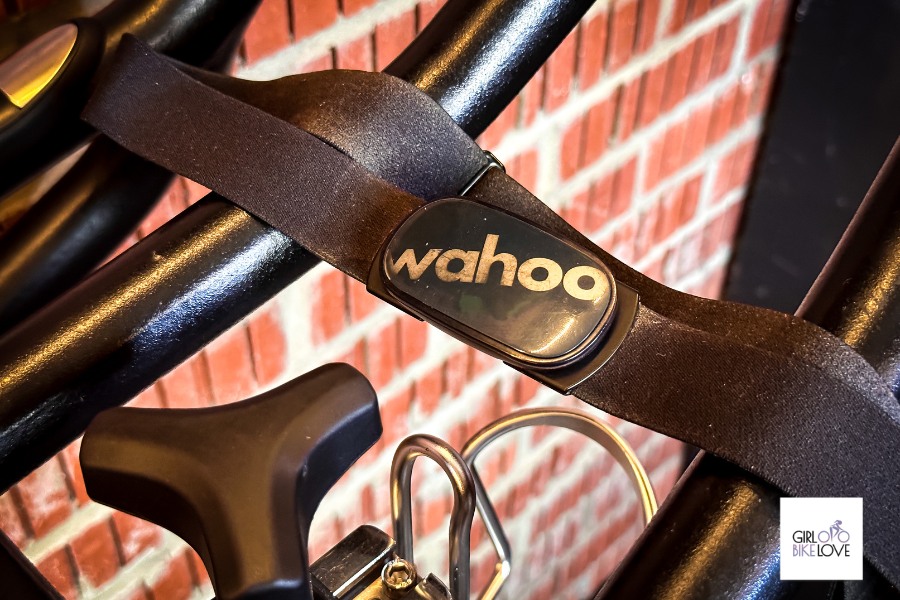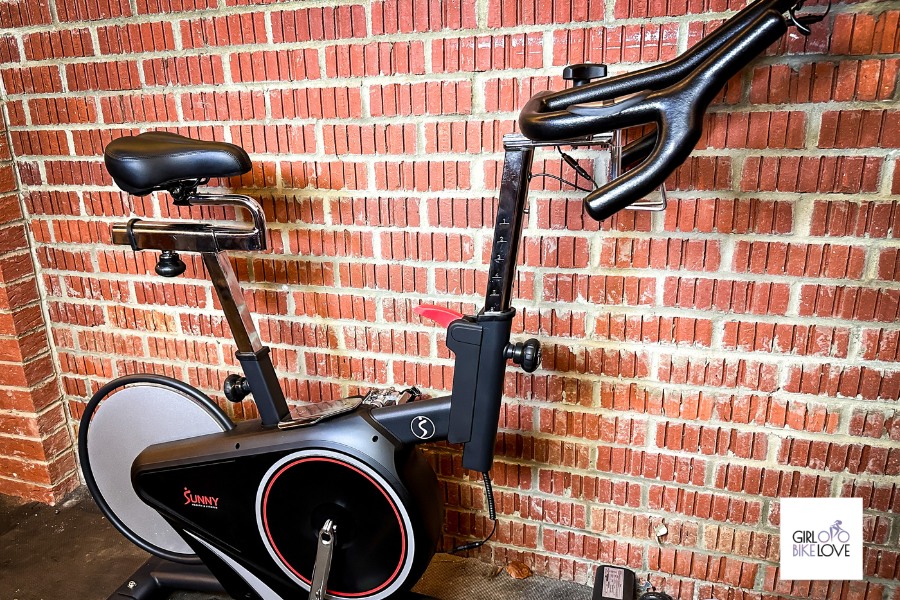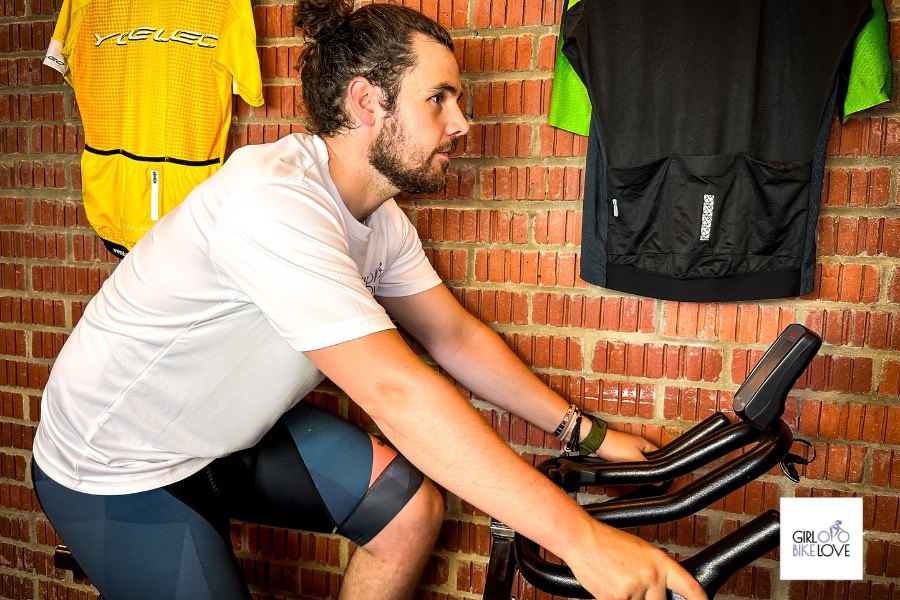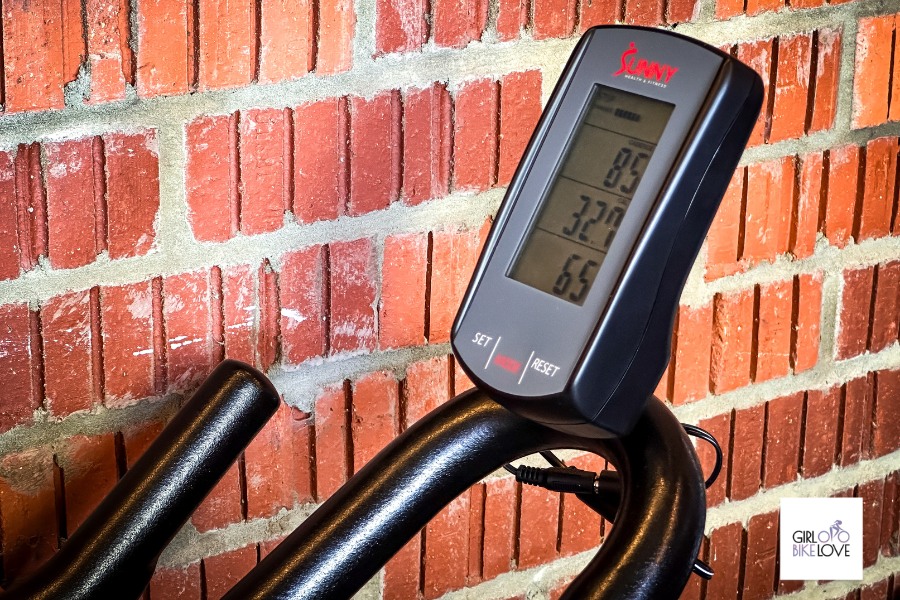Indoor cycling is a great way to stay in shape and regularly challenge yourself mentally and physically. It’s a huge amount of fun, and you can use many accessories to improve the experience.
Check out my YouTube video!
One accessory we recommend every indoor cyclist have is a heart rate monitor. They are a very valuable tool for tracking your work rate and fitness level. In this article, we’re going to tell you everything you need to know by discussing;
- What Is A Heart Rate Monitor?
- Why Is A Heart Rate Monitor Useful?
- How To Use A Heart Rate Monitor
- Frequently Asked Questions

What Is A Heart Rate Monitor?
A heart rate monitor is used to monitor your pulse. This is how often your heart beats. We measure heart rate in BPM, which stands for beats per minute. So if your heart rate is 60 bpm, that means your heart is beating 60 times in a single minute.
Heart rate monitors come in many different shapes and sizes. Some are used on the wrist, others on the upper arm, and the most popular type in sports is generally a chest strap, as it provides excellent accuracy.
Maximum Heart Rate
A lot of people ask what their maximum heart rate should be. As a rough estimate, it should be 220 – Your Age. However, the best thing to do is to use it for a while and experiment with high-intensity testing under a professional’s supervision to find an accurate measurement.
Are Exercise Bike Heart Rate Monitors Accurate?
You will even find some bikes with heart rate monitors built into them, and although they are good for a rough indication, they are generally not very accurate compared to a proper chest strap.

Why Is A Heart Rate Monitor Useful?
A heart rate monitor has a huge amount of uses, and we highly recommend them to anyone who enjoys exercise. Here’s what we think are the best uses:
Track Your Intensity
Heart rate monitors can tell you if you are working to your maximum or if you’re not working hard at all. They are a foolproof way to stop you from going too easy and to ensure when you get on the bike, you’re not slacking.
Structuring Workouts
A great way to structure a workout is by using a heart rate monitor. By knowing what intensity you’re working at, you can do training such as intervals or low-intensity sessions without guessing how hard you’re working.

Tracking Progress
You can track your fitness using a heart rate monitor to ensure it is progressing. By doing the same session with the same resistances, you will be able to see if your heart rate is coming down and you’re getting more efficient or getting higher, and your training isn’t working.
Health And Safety
Wearing a heart rate monitor can be very useful when it comes to telling you if you have any issues that need to be checked by a medical professional. If your heart rate is doing something completely unusual, get checked out.

How To Use A Heart Rate Monitor
Using a heart rate monitor is simple. All you need to do is connect it to a compatible bike or connect it to a tablet or smart device and use an application. It should then show on the screen for you to use on your next workout.

Frequently Asked Questions
Now for the question we get asked by our amazing watchers and readers, here’s what you need to know:
Which are some of the best heart rate monitors?
Actually, we have tested some of the best heart rate monitors for indoor cycling.
What happens if your heart rate is too high during cycling?
We recommend seeing a doctor or medical expert if your heart rate gets too high and goes well above your max. If it’s too high for the level you should be at in a workout, you have to slow down and ease back.
Where do you wear a heart rate monitor when cycling?
It depends on what heart rate monitor you have. If you have a chest strap, it goes on your chest. Wrist strap, wrist, and armband on the upper arm.
Heart rate monitor, Is the chest or wrist better for heart rate?
In our experience, the best way to go is a chest strap. It’s much more accurate and favored by professionals indicating it’s likely the best way to go.

A Final Note
Heart rate monitors are a great accessory to add to your indoor cycling setup. They can help you track your progress, structure workouts, and it’s great real-time data to see how hard you’re working. We hope you enjoyed our article. Make sure to check out our video and subscribe to the YouTube channel.
